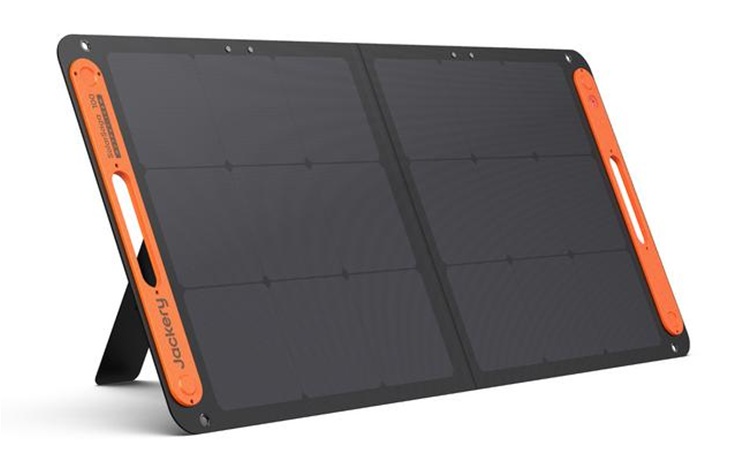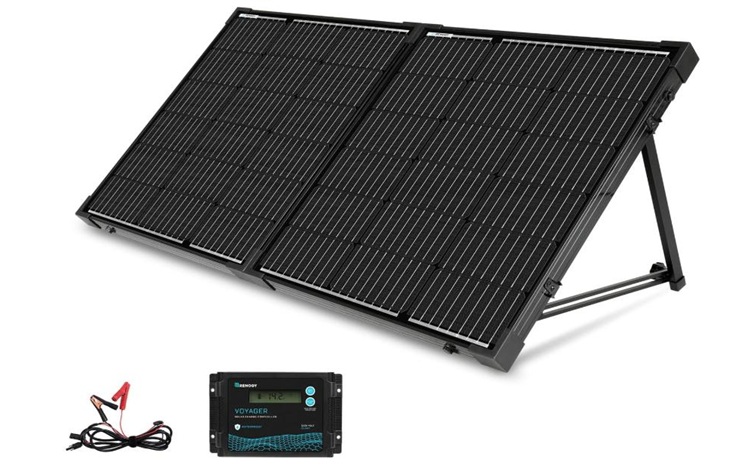Best Solar Car Battery Charger for Australia in 2025
If you've ever returned to your parked car only to find the battery dead, you're not alone. From weekend camping trips to keeping the family SUV ready in the driveway, more Aussies are turning to solar as a backup solution. A solar car battery charger gives you a portable, renewable way to top up or maintain your car battery—without depending on a wall socket or jumper cables. With Australia’s strong sun and love for the outdoors, it just makes sense. So, how do you choose one that actually works? Let’s walk through what matters.
Why Choose a Solar Charger for Your Car
Australia’s long distances and sunshine make solar a smart companion for vehicles. Here’s why more drivers are making the switch:
No need for power points – Great for off-grid travel, camping, or even long-term airport parking.
Battery maintenance – Keeps your battery topped up during storage without overcharging. You can also pair them with a portable power station to store extra energy for camping or emergencies.
Eco-friendly – Reduces the need for fuel-based charging or towing
Low-cost and low-maintenance – Once installed, they just work quietly in the background
According to the Australian Renewable Energy Agency (ARENA), over 30% of Aussie homes now use solar, and the outdoor gear market is following suit. Drivers are getting smarter about staying powered up, no matter where the road leads.
How Solar Car Chargers Work
A solar car battery charger uses solar panels to collect sunlight and convert it into DC electricity, which then feeds into your car’s 12V battery.
Here’s a simple breakdown:
The panel collects sunlight and generates a voltage (usually 12–18V).
A charge controller or regulator adjusts this to a safe level for your battery.
The charger connects to your car battery via clamps, an OBD port, or a cigarette lighter plug.
They’re especially handy for trickle charging—that slow, steady current that helps batteries maintain a healthy level when not in use. Some models can even recover a partially discharged battery over time.
Key Features to Look For When Choosing the Best Solar Car Battery Charger
Not all solar chargers are equal. The best one for you depends on how and where you’ll use it. Here's what to consider:
Wattage (Power Output)
The panel’s wattage determines how fast it can charge your battery.
10–20W: Ideal for battery maintenance and trickle charging
40–100W: Good for semi-regular charging or small 4WD trips
100W+: Suitable for off-grid adventures or faster charging needs
For example, a 20W panel might take a couple of days to charge a flat 50Ah battery under good sunlight, while a 100W panel might do it in less than 10 hours.
Portability and Foldability
If you’re camping or moving between vehicles, look for foldable or lightweight panels. Some even come with built-in kickstands for better angle control.
Regulator (Charge Controller)
A charge controller protects your battery from overcharging, which can reduce lifespan or damage the cells. Most modern solar chargers come with this built-in. If not, consider buying one separately.
Compatibility
Make sure it suits 12V batteries (lead-acid, AGM, or lithium if applicable). Check the connector options:
Alligator clips for direct battery access
12V socket (cigarette lighter) for maintenance
OBD-II port for some modern vehicles
Many panels also work well when integrated with a portable power station, offering more flexibility for off-grid use or powering extra devices.
Weather Resistance
Australia’s climate can be unforgiving. Choose splar panels that are waterproof (IP65 or above), UV-resistant, and tested for high-heat environments.
Brand Support & Warranty
Look for trusted brands that offer local support or warranties in Australia. You want peace of mind when you're off-grid.
Tips to Set Up Your Solar Car Battery Charger for Best Results
Setting things up right can make all the difference in how fast and efficiently your battery charges.
Angle it properly – Tilt your panel toward the sun, and adjust it during the day if possible
Clean your panel – Dust or bird droppings can block sunlight and reduce output
Use the correct connector – For parked vehicles, cigarette lighter plugs are easiest. For deep charging, use battery clamps.
Watch for shade – Even a little shadow across the panel can cut power by 50% or more
Store safely – When not in use, fold and store your panel in a dry place to extend lifespan
For a more integrated setup that combines solar generation and energy storage in one unit, the EcoFlow DELTA 2 Solar Generator (PV220W) is a great option, especially for extended off-grid trips.
EcoFlow DELTA 2 Solar Generator (PV220W)
Best Solar Car Battery Charger in 2025
Here are the top picks for Australians looking for a reliable solar car battery charger this year:
EcoFlow 125W Bifacial Modular Solar Panel
For those serious about power on the go, the EcoFlow 125W Bifacial Modular Solar Panel sets a new standard for a solar powered automotive battery charger. The standout feature here is its modular design—you can link up to eight panels for a powerful 1000W system. It also features up to 25% conversion efficiency and IP68 waterproofing, so it holds up well in the elements.
We liked the adjustable stand (30–60° tilt), which helps maximise sunlight capture throughout the day. With four panels weighing just 16.2kg total, it’s surprisingly portable for such high output. Morever, the 5-year warranty and 30-year lifespan make it a smart, long-term pick for serious off-grid or vehicle-based setups.
EcoFlow 125W Bifacial Modular Solar Panel
Jackery SolarSaga 100W Solar Panel
If you're after a compact, dual-purpose solar charger for car battery that fits easily into road trips or weekend camping, Jackery’s SolarSaga 100W panel offers great value. Its bifacial design captures energy from both front and rear surfaces, which can boost performance by up to 30%. The included kickstands make setup fast, and the durable ETFE-laminated case handles light rain and dust with no issue. It’s a great match for users who already have a Jackery power station or want flexible charging options.
The panel includes DC, USB-A, and USB-C ports, making it useful beyond just charging a battery—it can also top off phones, tablets, and other gear. It doesn’t ship with a charge controller, so it’s not as plug-and-play for direct battery charging as others on this list. But it’s light, easy to carry with its rubber handle, and reliable for everyday use. For those who prioritize speed, portability, and multi-device charging, it’s a dependable travel companion.

Renogy 100W 12V Portable Solar Panel
Renogy’s suitcase-style solar panel is a great choice if you're looking for a solar automotive panel charger that comes ready to use right out of the box. It includes a 20A Voyager charge controller, alligator clips, and a rugged carry case—everything you need to get started with 12V battery charging. The monocrystalline panel delivers 22% efficiency and features smart PWM tech to maintain safe, stable charging. It’s simple, durable, and designed with reliability in mind.
At 12kg and with a sturdy aluminium frame, it’s heavier than some portable panels, but it folds down neatly for storage. We appreciated the built-in safety features and solid construction—it feels like a product that’s made to last. There’s no USB output or modular expandability, but that’s the trade-off for its simplicity and ease of use. For people who want a dependable, no-fuss kit that works with almost any car battery, Renogy is a solid go-to option.

Conclusion
A solar car battery charger can be a handy solution for everything from weekend camping to daily vehicle maintenance. Whether you’re looking for a high-powered setup for off-grid travel or a simple panel to keep your parked car topped up, there’s something for every Aussie driver in 2025. At EcoFlow, we often hear from customers who are surprised by how much they’ve come to rely on their solar setup—not just for cars, but for laptops, fridges, and phones while they’re out exploring. Ready to stay powered wherever the road takes you? Explore our full range of solar car battery chargers and portable power solutions to find your perfect match.
FAQs
Do solar car battery chargers really work?
Yes, they do. A quality solar charger can keep your battery topped up or even recharge it if it’s partially drained. They’re especially useful for parked vehicles, caravans, or 4WDs that aren’t used every day. As long as there's enough sunlight, they’ll keep your battery healthy without needing a wall socket.
Can car battery be charged with solar?
Absolutely. As long as the solar charger matches the voltage (usually 12V for most cars) and has enough wattage, it can safely charge your battery. Many systems also include regulators to prevent overcharging. Just make sure your panel is positioned well and gets consistent sunlight.
How long will a 20W solar panel take to charge a 12V battery?
Charging time depends on battery size and sunlight. For a typical 50Ah 12V battery, a 20W panel might take 2–3 days of full sun to bring it from low to full charge. It’s best suited for maintenance or slow top-ups rather than fast charging.
Can a solar charger recharge a flat battery?
Not always. A completely dead battery may need a higher-powered charger or a jump start to get going again. However, solar chargers can recover lightly drained batteries over time. For full recharging, especially off-grid, aim for a panel with 80W or more.